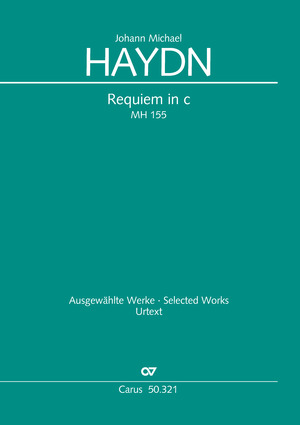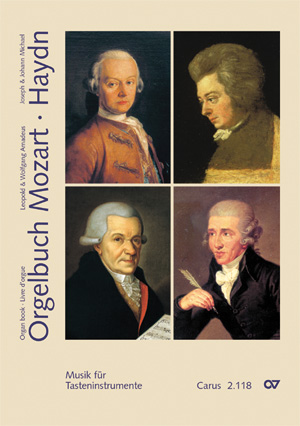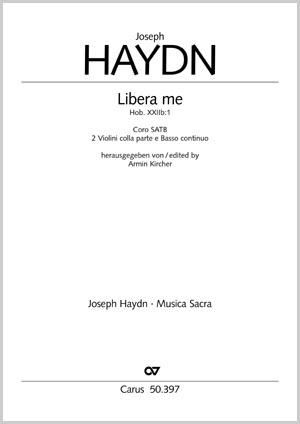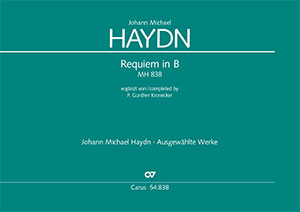
Requiem in C minor
MH 155, 1771
-
Composer
Johann Michael Haydn
| 1737-1806Johann Michael Haydn wirkte ab 1763 am renommierten geistlichen Fürstenhof in Salzburg. Stilistisch schlug er in seinem 43-jährigen dortigen Wirken die Brücke von der Frühklassik zum musikalischen Biedermeier. Entsprechend seinen dienstlichen Verpflichtungen hat Haydn praktisch zu allen in der katholischen Liturgie gepflegten Gattungen beigetragen: Das Wissen um die liturgische Funktion und die musikalische Ausdeutung der religiösen Texte zeichnet Haydns Kirchenmusik aus. Johann Michael Haydn wurde von den Zeitgenossen zunächst als gleichberechtigt neben Joseph Haydn gesehen. Erst der steile Aufstieg des älteren Bruders zum bedeutendsten Instrumentalkomponisten der Zeit rückte Johann Michael Haydn in den Schatten, aus dem ihn die musikalische Entdeckerfreude der letzten Jahre zunehmend herausholt. Personal details
-
Editor
Charles H. Sherman
Reviews
Requiem in C Minor, Michael Haydn
Requiem in C Minor, Michael Haydn
This extended 45-minute Requiem in Latin was written for Archbishop Sigismundo in a two-week time span. The orchestra has no violas, but includes trumpets, trombones, timpani and continuo. There are nine movements and the soloists appear in seven of them, usually interspersed among the choral writing which is extensive. In Salzburg, two organs were used at that time for church music, one for the soloists and one for the tutti areas. Haydn wrote more than one Requiem, and this One, according to the editor Charles Sherman, is the ”first product of Haydn’s full maturity”. Excellent edition and repertoire for a mature choir.
Quelle: The Diapason, Feb. 1993, S. 7/8
Michael Haydn: REQUIEM IN C
Das Requiem zählt zu den bedeutendsten Kirchenwerken Michael Haydns. Es wurde anlässlich des Todes von Fürsterzbischof Sigismund, des großen Förderers von Haydn, komponiert. Bei seiner Aufführung wirkten auch Leopold und W. A. Mozart mit, und es wurde ein bleibender Eindruck für Wolfgang Amadeus, denn er nahm es als Vorbild für sein eigenes Requiem. Umfangreiche Hinweise zur Instrumentation und Aufführungspraxis des fünfundvierzigminütigen Werkes machen die hervorragende Ausgabe komplett.
Wolfgang Nickel
Quelle: Kirchenmusik im Bistum Limburg
Frequent questions about this work
Die Besetzungsangabe lautet: 2 Clarini, 2 Trombe. Was ist der Unterschied zwischen Clarini und Trombe?
 There are no questions and answers available so far or you were unable to find an answer to your specific question about this work? Then click here and send your specific questions to our Customer Services!
There are no questions and answers available so far or you were unable to find an answer to your specific question about this work? Then click here and send your specific questions to our Customer Services!






